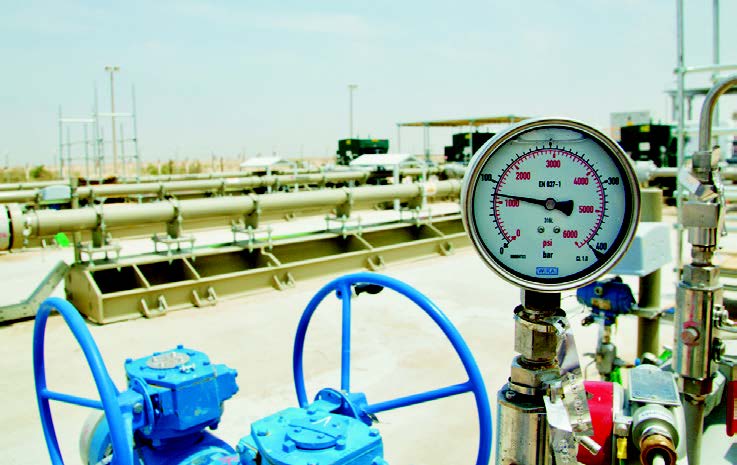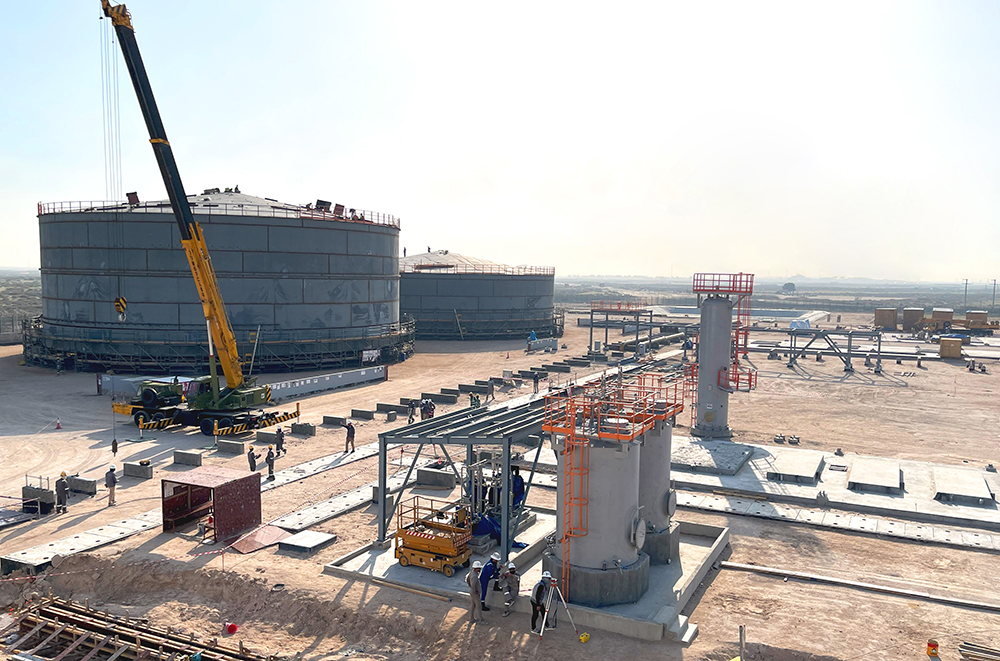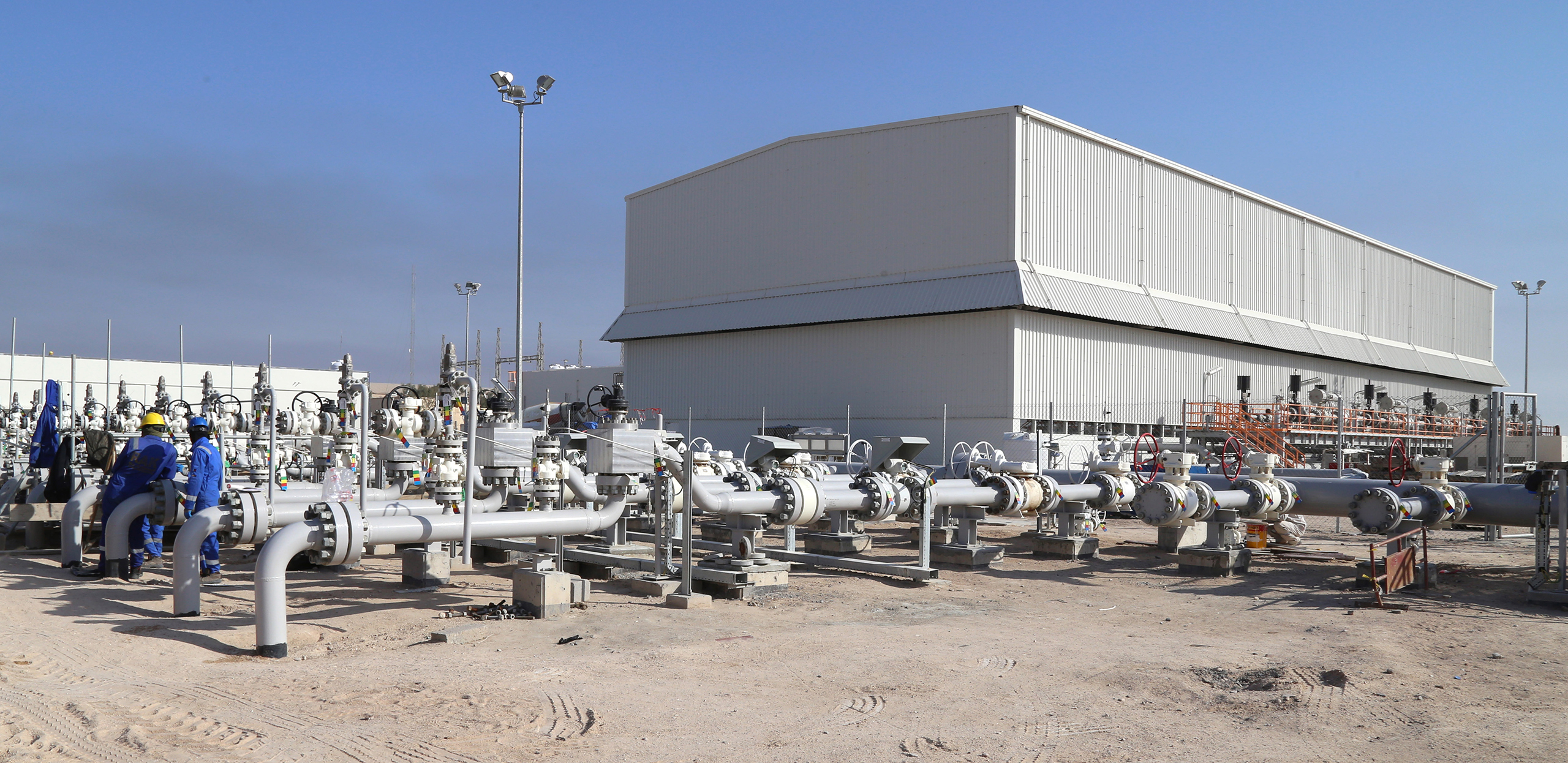
After 60 years of production, Rumaila’s reservoirs are changing. Pressure levels in reservoirs in the north of the field have dropped. This is part of a process called base decline and is common to all oilfields (although the rate of decline varies).
To boost pressure and increase oil production, saline water – unsuitable for drinking without significant treatment – is taken from the Khawr ‘Abo Abdullah Waterway – a man made channel off the Qarmat Ali Waterway – and injected deep underground via cluster pump stations (CPSs). An ongoing maintenance and upgrade programme ensures that these CPSs and the Qarmat Ali Water Treatment Plant – along with water pipelines and injector wells – operate to maximum efficiency to manage these water resources responsibly.

ROO is investing in Produced Water Re-injection (PWRI) plants – two of which are currently being built, with more planned. These are designed to recycle and reinject produced water (i.e. water that is separated from produced crude oil) into the reservoirs.
The first of these (PWRI-1) is being constructed near the Rumaila power plant and is projected to come online in early 2024.

Looking to the future, Rumaila needs to boost production from the Mishrif reservoir in the south of the field. Cluster pump station six (CPS-6) is a new facility which has been constructed for this purpose and was the first of its kind at Rumaila for some 40 years. A further new facility in South Rumaila – CPS-7 – has also been built to an identical specification, becoming fully operational in 2024.
About the new cluster pump stations